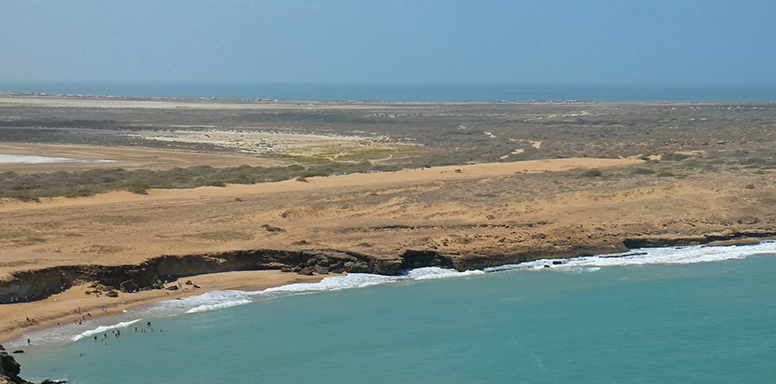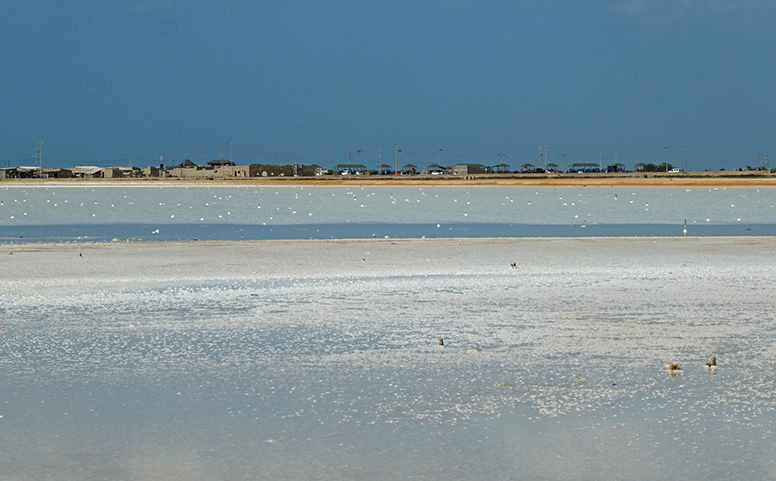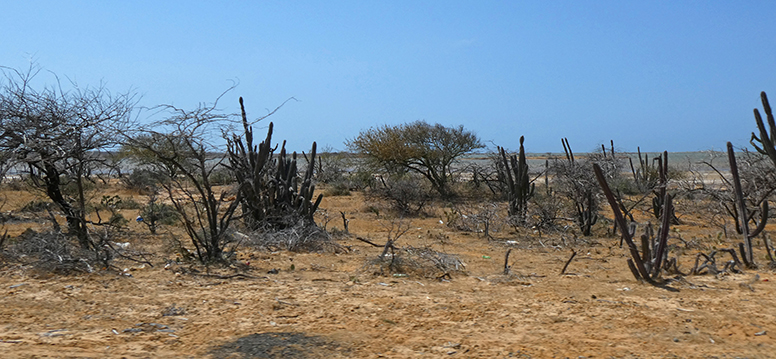The northernmost region of mainland Colombia is visited by more and more tourists every year. You can find a lot of useful information online, so there’s no need for me to mention the most popular places to go to. This blog post aims to provide some practical recommendations based on my trip to La Guajira that I took two months ago.

Spend some time in Riohacha
Most tourists start their trip to La Guajira in Santa Marta, Barranquilla, or even Cartagena. Riohacha is often seen just as a transit city, which I think is a bit unfair. The department’s capital has a pleasant vibe and I really enjoyed my time in it. I recommend spending a night there so you can see a beautiful sunset from the promenade. This is a nice opportunity to visit a coastal city that isn’t that popular with foreign tourists. There are direct flights to Riohacha from Bogotá, Medellín, and Cali, which makes it easy to reach.
It’s better to book a tour in person
A trip to La Guajira definitely isn’t cheap by Colombian standards, and if you search for tours on the internet, you will find some really expensive packages. There are plenty of agencies in big cities that can take you to Cabo de la Vela and beyond, and you will find lower prices when you go to the office in person. This is another advantage of going to Riohacha since you can find a better deal there compared to Santa Marta or Cartagena. I recommend that you shop around and visit more agencies, which will give you a chance to choose the operator that suits you best.
The coastal road provides a nice detour
Most visitors travel from Rioacha to Uribia using the main road and the Cuatro Vías intersection. However, that means missing out on some nice places to visit. The coastal road is less comfortable, but you can stop in Mayapo, which offers stunning sandy beaches. I also highly recommend visiting the saltworks of Manaure, where you can take an informative tour to find out more about the process of extracting salt from seawater. If you’re not in a rush, visiting these two places on the way to Uribia is a pretty good option.

Uribia can be a good starting point as well
The indigenous capital of Colombia doesn’t have any beautiful sights, but it’s the closest town to Cabo de la Vela with some amenities. Work Space Hostal is the only property in Uribia that can be found on booking.com at the moment, and I can confirm that it’s a good place to stay at. The main advantage of spending a night in the town is that you can leave for Cabo de la Vela early in the morning and beat the crowds, which is especially helpful when travelling during a popular vacation period.
It’s possible to explore La Guajira independently
If you don’t like using tour agencies, you can go to the most visited places on your own. Driving a car is an option, but that’s a bit risky since the farther you go, the worse the roads get. It’s also easy to get disoriented in the desert, so most people prefer to hire a local driver. Probably the cheapest option is to get a ride to Cabo de la Vela in a jeep from the intersection right outside Uribia, and then pay for a trip to places such as Pilón de Azúcar. It seems to be safe to do so, and adventurous travellers may choose to move around without being part of a guided tour. The main dangers to tourists come from the harsh environment, so don’t forget to pack appropriate clothes, a lot of water, and plenty of sunscreen!

Take a lot of cash with you
There are three Bancolombia ATMs in Uribia, but only one of them was working when I was there. I got lucky and managed to withdraw enough money for the trip to Cabo de la Vela because the following day all the ATMs were out of operation. It’s a good idea to get your cash in advance in one of the big cities.
Speaking of money, La Guajira isn’t the right place for negotiating and asking for discounts, which is common in some other parts of Colombia. Food in places like Cabo de la Vela and Punta Gallina is pricey by Colombian standards, but it’s important to look around and see how basic the infrastructure is. There are issues with water and electricity, and a lot of stuff has to be transported by land in difficult conditions, which explains why you need to pay more for some products and services.
Don’t expect a sanitised experience
La Guajira is quite clearly a beautiful place; seeing the desert meet the sea is something you won’t forget. However, you have to be ready for some less pleasant sights along the way. If you explore the region on Google Street View, you can easily find images like this one. Unfortunately, there is a huge problem with plastic waste in La Guajira due to an ineffective waste collection system and lack of education. It’s common to see the locals litter and pollute the area in which they live, which I think may turn into an environmental disaster in the near future.
You will also encounter children trying to stop cars and ask for money or food, which may be distressing for visitors. The locals I’ve talked to suggested that it’s one of those situations when doing what you think is a good deed may actually exacerbate the problem.
The overall feeling in La Guajira seems to be that the region receives very little attention from the government. In addition, the department is beset by rampant corruption and incompetence. For example, a new bus terminal was opened in Uribia in 2015. For some bizarre reasons, it has never been used by actual buses and the intersection just a couple of hundred metres up the road continues to serve as the main transport hub.
I’d say that La Guajira is a good example of challenges that developing countries often face. Having beautiful landscapes is obviously a great thing, but there are still plenty of issues affecting the local population that need to be resolved.
